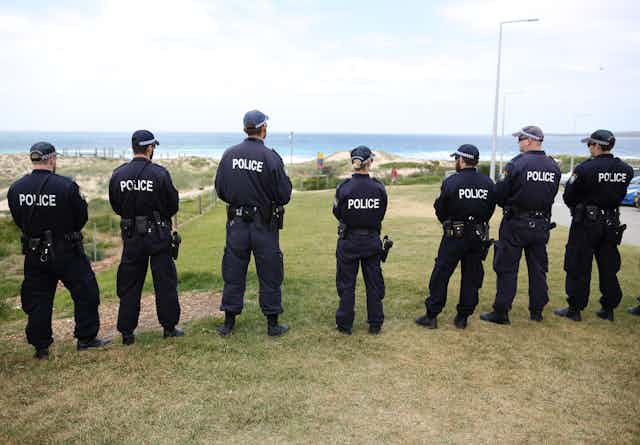As New South Wales police continue to investigate the alleged murders of Luke Davies and Jesse Baird, much attention has been paid to the alleged murder weapon - a police handgun.
Police allege the couple was murdered by Senior Constable Beau Lamarre-Condon last week, which has in turn provoked debate around the protocols around how, why and when police are able to use firearms.
How and when do officers have access to a gun?
Police firearms are stored in a standalone firearms room in a police station. Any time an officer enters the firearms room, their identity is recorded along with the time and date.
The room can also have CCTV in it, depending on the age of the building and its electronic infrastructure. In the room is an industrial-made firearms safe that is specifically made to store firearms.
Once in the room, officers have a key to the safe so they can access their firearm. Each firearm within the safe is individually locked and secured so no police can access anyone else’s firearm. This is due to the design of the gun safe, which must meet Australian Standards in safe storage of firearms and NSW legislation on the safe storage of firearms.
Police access their firearm and carry out a set of drills to ensure it is in working order. They then place the weapon in their holster while in the room, and then leave. At the end of the shift, they return their firearm, going through the same procedure.
Are they ever able to access a weapon off-duty?
Police do not, generally speaking, have access to their firearms when off-duty. In rare circumstances, an officer may be allowed to store their weapon at home, but the threshold to obtain permission for this is very high. It will only be granted when there is credible evidence an officer’s life is in danger, generally from organised crime syndicates or criminals with a history of extreme violence towards police. Any request must be supported by several senior police.
There are jobs police can undertake called “user pays” events. These have been around for over 25 years, and it simply means that outside organisations pay police to be at an event that requires extra security. Police have the same legislative powers when working at a user-pays event as they do with their regular duties, and also routinely carry a firearm.
If police are working “user pays”, they access their firearm in exactly the same manner as for a standard shift. However, when they complete their user-pays shift, they can return their firearm to the closest police station to where they live. They must follow the same procedure to secure their firearm.
Because the officer’s firearm is not being returned to their usual police station, the local officer in charge, usually an inspector of police, needs to give access to that police station’s gun safe as an additional layer of accountability. The officer’s firearm can also be double locked.
There will be a record made at that police station that an officer has placed his/her firearm in that station’s safe. Police firearms are not always checked to see if it has been discharged. This is due to the massive amount of administrative and policing time this would take.
Read more: Police body cameras may provide the best evidence – but need much better regulation
How do police have to account for the weapons and the bullets?
Each officer is allocated a firearm from the day they finish their police academy training. That firearm is the responsibility of that officer for the duration of their career.
Police can voluntarily surrender their firearm or have their firearm taken from them if, for example, they are on restricted duties such as administrative jobs or if they have been found to have misused it. If it is surrendered, the firearm is taken to the ballistics unit. The officer will then never have access to that firearm again.
Pre-planned audits are carried out on police firearms several times a year, along with random audits that are not necessarily known to police. These spot checks are undertaken by officers who are senior to the individual police officer to whom that firearm is allocated.
All audits include checking firearm serial numbers, the number of bullets and the number of magazines each officer has in their organisational records. So any missing bullets would be noticed, but perhaps not right away.
Read more: Australia had a record number of police shootings in the past year. Should we be concerned?
Should there be tighter controls on police access to firearms?
The process to gain access to an officer’s firearm is time-consuming, not only due to accessing the firearm itself but complying with the policies and procedures around it. It can take up to 15 minutes per officer to access and holster their firearm in a busy police station, given only one officer can access their firearm at any one time.
Any idea that an officer’s access to their firearm is easy, quick and they are not accountable for it is incorrect. But there may be ways to improve the procedures, and depending on the outcome of the investigation, police may need to review these.

